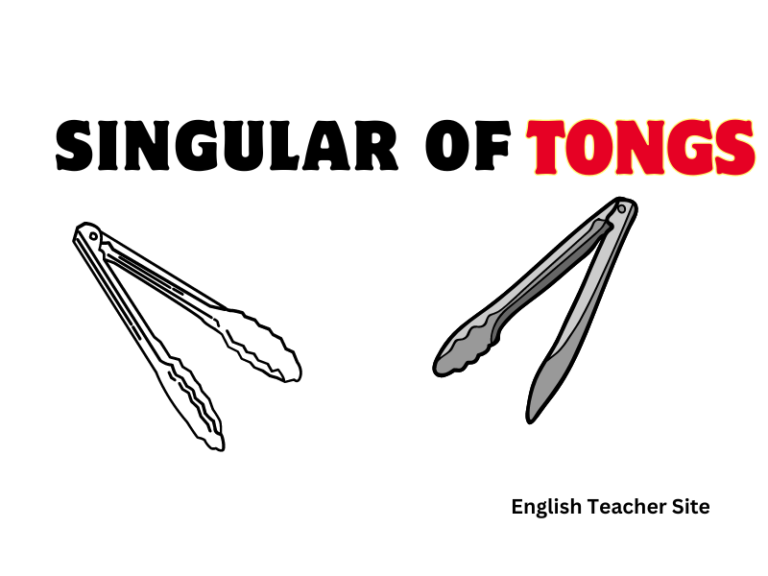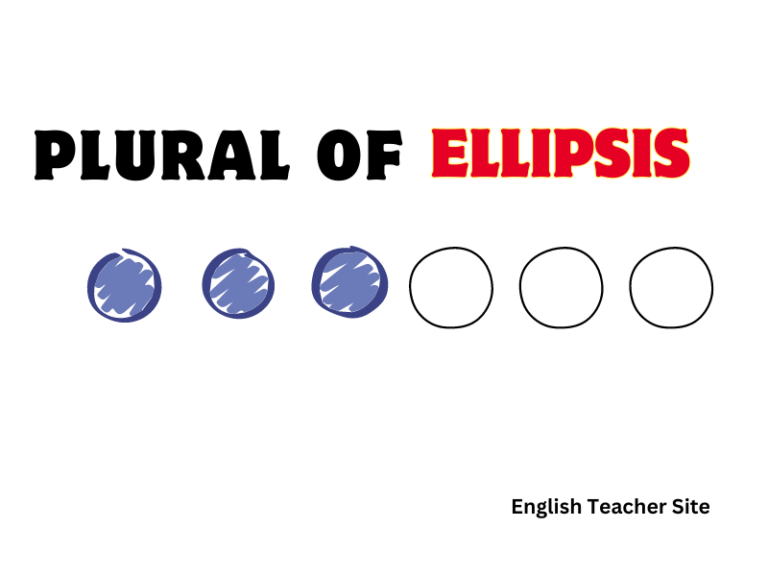What’s the Plural of Ellipsis: Understanding Multiple Omissions

- An ellipsis is a set of three dots representing an omission or a pause.
- The plural form of ellipsis is ellipses, conforming to Greek-origin noun patterns.
- Ellipses illustrate the diversity and adaptability of English punctuation rules.
Despite its singular appearance, the plural form of ellipsis is not what one might expect. Following a pattern seen in other English nouns that end in -sis, the plural is formed by changing the ending to -ses, resulting in ellipses. This morphological change is standard for many words of Greek origin, which have retained their classical pluralization in English. The use of ellipses is a testament to the language’s complexity and its capacity to absorb and modify linguistic elements from different sources.
What’s the Plural of Ellipsis?
The term “ellipsis” comes from the Greek word elleipsis, which means “omission” or “falling short.” In English grammar, an ellipsis is a series of three dots (…), also known as suspension points, used to indicate the omission of words in a quotation, a pause in speech, unfinished thoughts, or as a device to build suspense.
The plural form of ellipsis is ellipses. To form the plural, one simply adds -es to the singular form. This rule applies to similar Greek-derived words that end in -sis, transforming into -ses in plural.
| Singular Form | Plural Form |
|---|---|
| ellipsis | ellipses |
Below are examples of ellipsis and ellipses used in sentences:
- Singular: An ellipsis can indicate hesitation in a character’s dialogue.
- Plural: His essay was filled with ellipses where citations should have been.
In typography and digital writing, it’s important to recognize the correct use of ellipses. They serve specific purposes and must be formatted correctly to maintain clarity and coherence in communication.
| Purpose of Ellipsis | Example of Use |
|---|---|
| Omission of words | “To be… that is the question.” |
| Pause in speech | “I’m not sure… maybe tomorrow.” |
Is Ellipsis Singular or Plural?
Singular
| Term | Definition |
|---|---|
| Ellipsis | A series of three dots (…) signifying omission in the text. |
When referencing a single set of three consecutive dots used in writing, one uses the term ellipsis. This punctuation mark indicates a pause, trailing off of thought, an unfinished statement, or the omission of a word or phrase in a sentence.
Plural
| Term | Definition |
|---|---|
| Ellipses | Multiple instances of ellipsis used within a document. |
For multiple occurrences, the correct plural form is ellipses. Though it might seem counterintuitive since an ellipsis consists of three dots, it’s essential to remember that the plural refers to separate instances of this triad being used.
- Examples of Ellipsis Use:
- Indicating a pause: “She thought about it…”
- Omitting text: “The constitution states that… the right to a speedy trial.”
- Examples of Ellipses Use:
- In a document: “The lawyer used ellipses at several key points…”
What’s the “Definition” of Ellipsis?
Functions of Ellipsis:
- To indicate the omission of words
- To create a pause in dialogue or thought
- To show an unfinished thought or trailing off
| Usage | Example |
|---|---|
| Omission | “I had the feeling that he was […] than me.” |
| Pause | “Well… I’m not sure.” |
| Unfinished | “If only she could see what I…” |
Form:
An ellipsis is commonly represented by three consecutive dots (…). However, the style can vary depending on the guidelines of specific style manuals.
| Style Manual | Representation |
|---|---|
| MLA | Three spaced dots |
| APA | Three unspaced dots |
When it comes to the plural form of ellipsis, English adheres to the standard rule of adding an -es suffix to nouns ending in “s,” thus forming “ellipses.”
- Single: Ellipsis
- Plural: Ellipses
Nouns That End in (-sis/-ses)
When transforming singular nouns ending in -sis into plural form, the general rule is to replace -sis with -ses. This pattern is part of English’s Greek inheritance, where many medical, scientific, and technical terms have proliferated.
| Singular | Plural |
|---|---|
| Diagnosis | Diagnoses |
| Thesis | Theses |
| Crisis | Crises |
| Basis | Bases |
| Analysis | Analyses |
These nouns often refer to states, conditions, or processes. For instance:
- Thesis becomes theses when referring to multiple research documents.
- Analysis changes to analyses signifying several examinations or detailed investigation.
Here are some points to notice about these transformations:
- The stress pattern of the word may shift in the plural: for analysis (/əˈnæl.ə.sɪs/) to analyses (/əˈnæl.ə.siːz/).
- Not all words ending in -sis follow this rule due to either being less common or not fitting the Greek origin pattern.
| Exception Singular | Exception Plural |
|---|---|
| Ellipsis | Ellipses |
| Paralysis | Paralyses |
In the case of ellipsis, the plural forms by simply adding -es, creating ellipses, which follows a different rule than the usual pattern.
To remember these transformations, consider:
- Words ending in -sis have a Greek root and usually describe a process or condition.
- The switch to -ses in the plural often indicates multiple instances or occurrences.
- Pay attention to pronunciation changes when the word becomes plural.
Examples of Ellipsis Used (in Sentences)
Omission of Text
Writers may use an ellipsis to omit part of a quote that is less relevant to the point being made.
- Before: “The research concluded that the new treatment was significantly better than existing methods.”
- After: “The research concluded…significantly better than existing methods.”
Indicating Pauses
Ellipses can also indicate a pause, either to add dramatic effect or to indicate hesitation in dialogue.
- “I’m not sure… perhaps we should reconsider the proposal.”
- “When I saw the mountain view… it took my breath away.”
Unfinished Thoughts
At times, sentences are intentionally left incomplete to suggest that the reader extrapolate their own conclusion.
- “If he could only understand the situation from her perspective, then…”
- “I thought I had all the answers, but now…”
Usage in Dialogue
In written dialogue, ellipses are frequently used to represent trailing off or the interruption of speech.
Trailing Off
He murmured, “I wonder if I could ever explain…”
She whispered softly, “If only we had met sooner…”
Interruption
Adam began protesting, “But I never said—”
“No, listen to me,” Jenna interrupted, “we need to act now, or…”
| Function | Example |
|---|---|
| Omission | “Life, Liberty…the pursuit of Happiness.” |
| Pause | “Well… that’s unexpected.” |
| Unfinished Thought | “The truth is… “ |
| Trailing Off | “I always thought that…” |
| Interruption | “No, this isn’t how…” |
In Literature and Other Media
Ellipses are not only found in academic and personal writing but are also prominent in literature, comic books, and screenplays, where space and pacing are crucial. The ellipsis allows authors to condense language, build suspense, or leave matters to the imagination of the audience.
Origin of the Word Ellipsis
The term ellipsis originates from the ancient Greek word ἔλλειψις (elleipsis), which means ‘omission’ or ‘falling short’. Greek scholars used this term to denote the omission of words in speech or writing, a concept that is still central to the use of ellipses today. The journey of the word ellipsis from its ancient Greek roots to the modern English term reflects the evolution of the concept it embodies.
| Greek Term | Translation |
|---|---|
| ἔλλειψις | Omission |
In English grammar, an ellipsis is a series of three periods (also known as ellipsis points or dots) used to indicate the omission of words or to create a deliberate pause. The plural of ellipse is ellipses.
- Ancient Usage:
- Used by scholars in Greek dramas and poetry.
Over time, the grammatical use of ellipses has been codified in various style guides and has found a specific role in written communication. It signifies various things from trailing off in thought to omitting a portion of a quote.
- Modern Usage:
- Signifies trailing thoughts in writing.
- Indicates omission of words in quotations.
| Usage | Purpose |
|---|---|
| Trailing off | Indicate a pause in thought |
| Quotations | Omit unnecessary parts |
The evolution of the word ellipsis from elleipsis illustrates how language adapts and evolves to encompass new linguistic functions while maintaining its root meaning.
Sources
Harper Douglas, “Etymology of ellipsis,” Online Etymology Dictionary
My name is Khamis Maiouf. I am the creator of the English Teacher Site, dedicated to providing valuable resources and insights for students around the world. With a passion for education and a commitment to helping students enhance their skills, I aim to make English teaching more effective and enjoyable for both educators and students.






